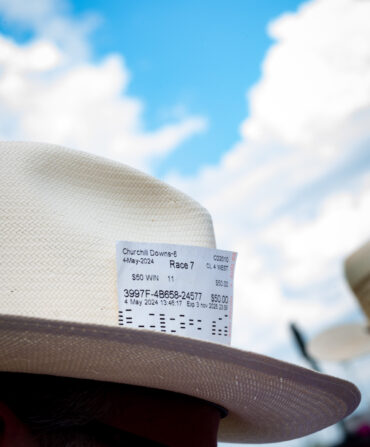Photographer Bill Steber was one of only a few lensmen who had permission from northern Mississippi blues artist David “Junior” Kimbrough to shoot film at his legendary juke joint in Chulahoma. Over nearly two dozen nights from 1993 until 1999, Steber captured the spontaneous energy and candid moments Kimbrough’s music inspired at the slapdash structure informally known as Junior’s Place.

“It was really one of the most important physical spaces in the history of Mississippi music, and maybe music anywhere,” says Steber, who has captured Mississippi blues culture for three decades. “The music, of course, is the primary thing, but every square inch of that place was a kind of joyous, over-the-top folk-art masterpiece.”
Although the building burned in April 2000, silencing the magic that Kimbrough, his friend and fellow Hill Country legend R.L. Burnside, and their extended family and friends conjured there, its memory continued to hound Steber. Soon after the all-encompassing blaze, he walked the ashen remains and collected artifacts like quarters found underneath the spot where the jukebox sat. He also measured the footprint dimensions, which—along with the color film he shot during the summer of ’99, his last time to visit before it all went up in flames—proved invaluable when he commissioned Lee Harper of Tiny History Studios to recreate every inch, smudge, and crumpled cigarette butt in a diorama of Junior’s Place.

Harper had already garnered word-of-mouth praise for her intricate recreations of other iconic Mississippi landmarks, including the Blue Front Café in Bentonia, the kitschy, bygone Graceland Too in Holly Springs, and the series of long-lost Oxford locales featured in her book, Tiny Oxford. As with her previous work, Harper used found objects as source material to create the miniature model, with nothing prefabricated or 3D printed.
“I’ve developed a habit of looking at everything as a possible material—things I might be throwing away, things other people might be throwing away, stuff at Goodwill I’ve broken apart because some little thing on it is perfect,” says Harper, who works out of her backyard studio near Oxford.
She stocked the club’s cooler, for instance, with beer made from a long dowel rod, which she painted and then cut into individual Busch Light and Budweiser cans, and fashioned cigarettes for the tiny ashtrays out of wire. Pieces of a fitted sheet became the curtains. For Junior’s personal chair—perhaps the most important piece of the scene—she used lambskin from an old pair of gardening gloves that cracked in just the right way when rubbed. Thin strips of paper became the duct tape, covering holes Junior had worn in the vinyl. But the project was as much an engineering challenge as an art project; she devised a concoction of super glue and miniscule mirrors to recreate the building’s fogged-over fluorescent lights, which she rigged to switch on and off.

Over five months in 2023, Harper made two dioramas of Junior’s Place that are unique in very subtle ways, since she doesn’t build them to an exact scale. The model Steber commissioned is currently part of an exhibit at the Baldwin Gallery on the campus of Middle Tennessee State University in Murfreesboro, alongside those quarters and other artifacts Steber collected from the ruins, on display through February 16. The day before that exhibit closes, both Harper and Steber will present an illustrated talk featuring a second, unsold model at the Mississippi Arts + Entertainment Experience in Meridian as part of the exhibit “America at the Crossroads: The Guitar and a Changing Nation.” (That model will remain in the exhibit until March 15.)
While viewing Harper’s immaculately detailed dioramas of Junior’s Place is the closest anyone can get now to revisiting the iconic haunt, for Steber they complete the picture. “To cut to the chase, it really was my church, and I don’t mean that facetiously,” he says. “It was a transcendent experience.”
Take a video tour of Junior’s Place through Harper’s diorama, filmed by Andy Harper and set to an interpretation of Kimbrough’s “All Night Long” performed by North Mississippi Allstars, featuring Luther and Cody Dickinson and Cedric Burnside—all of whom learned in part by watching Junior and playing at the juke.








